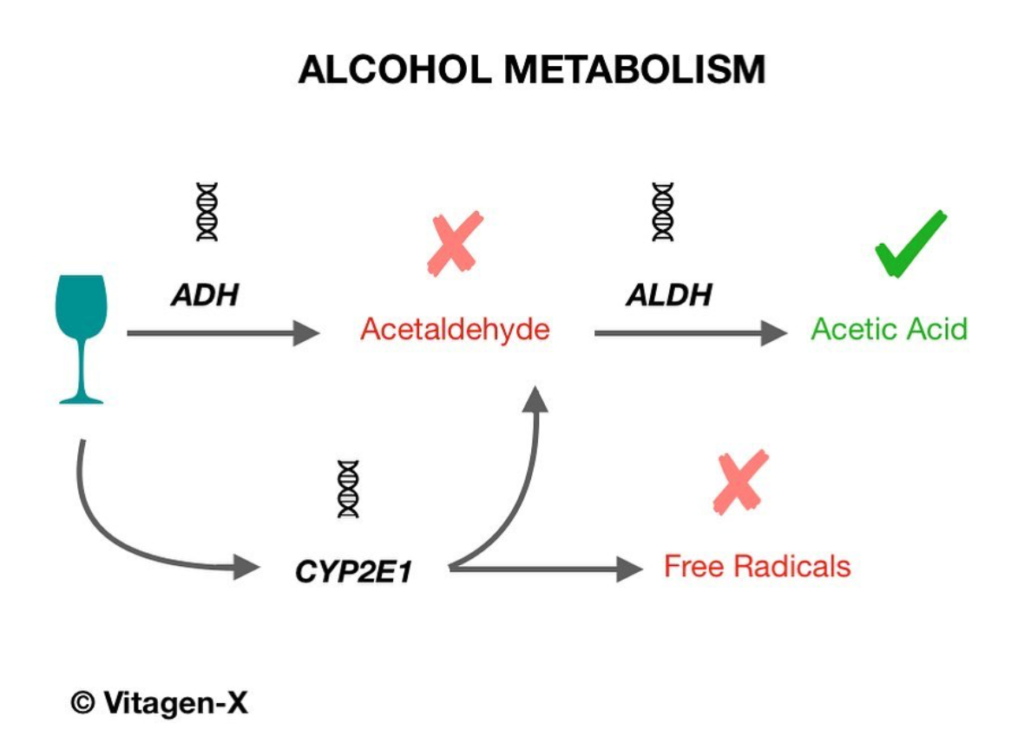The diagram below shows how your your body processes alcohol (ethanol) 🍷➡️💥➡️✅
1) Alcohol passes into your stomach, some diffuses directly into the blood stream and the balance continues to the small intestine and on to the liver.
2) The ADH enzymes convert alcohol to acetaldehyde which is far more toxic ‼️ Symptoms of high acetaldehyde include facial flushing 😳, headache 🤕 , nausea, vomiting 🤮 , low blood pressure and hangovers 🤢🤕. Certain ethnicities (particularly East Asians), people with genetic variants and females have altered ADH activity and are at risk of high acetaldehyde. Important nutrients for healthy ADH activity are zinc and vitamin B3.
3) When alcohol consumption is high, the enzyme CYP2E1 is activated to help with converting alcohol to acetaldehyde. This pathway is undesirable because it produces free radicals 💥which damage cells, proteins and your DNA. Two of the areas this enzyme is most active are the liver and brain 🧠 which contribute to the damage alcohol does to both of these organs. Low to moderate alcohol consumption does not activate this pathway.
4) Finally acetaldehyde passes through the ALDH enzymes where it is converted to acetic acid ✅ and prepared for excretion. Nutrients that support ALDH include magnesium, molybdenum, B2, B3 and zinc. Overgrowth of the yeast Candida can generate additional acetaldehyde and slow down this pathway. 🤓
Our VitaGEN report covers the genes involved in alcohol metabolism and will provide you with relevant information and advice


